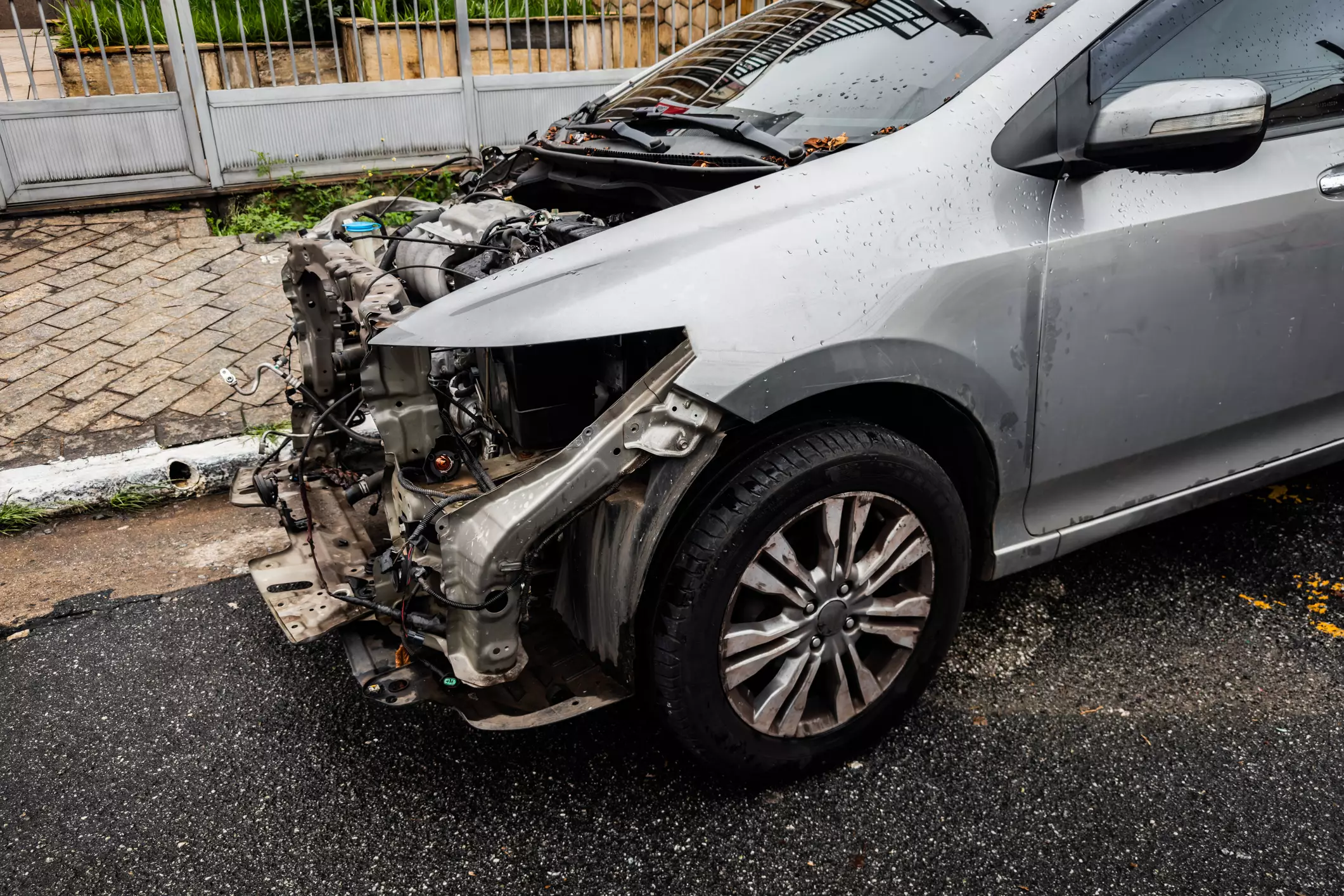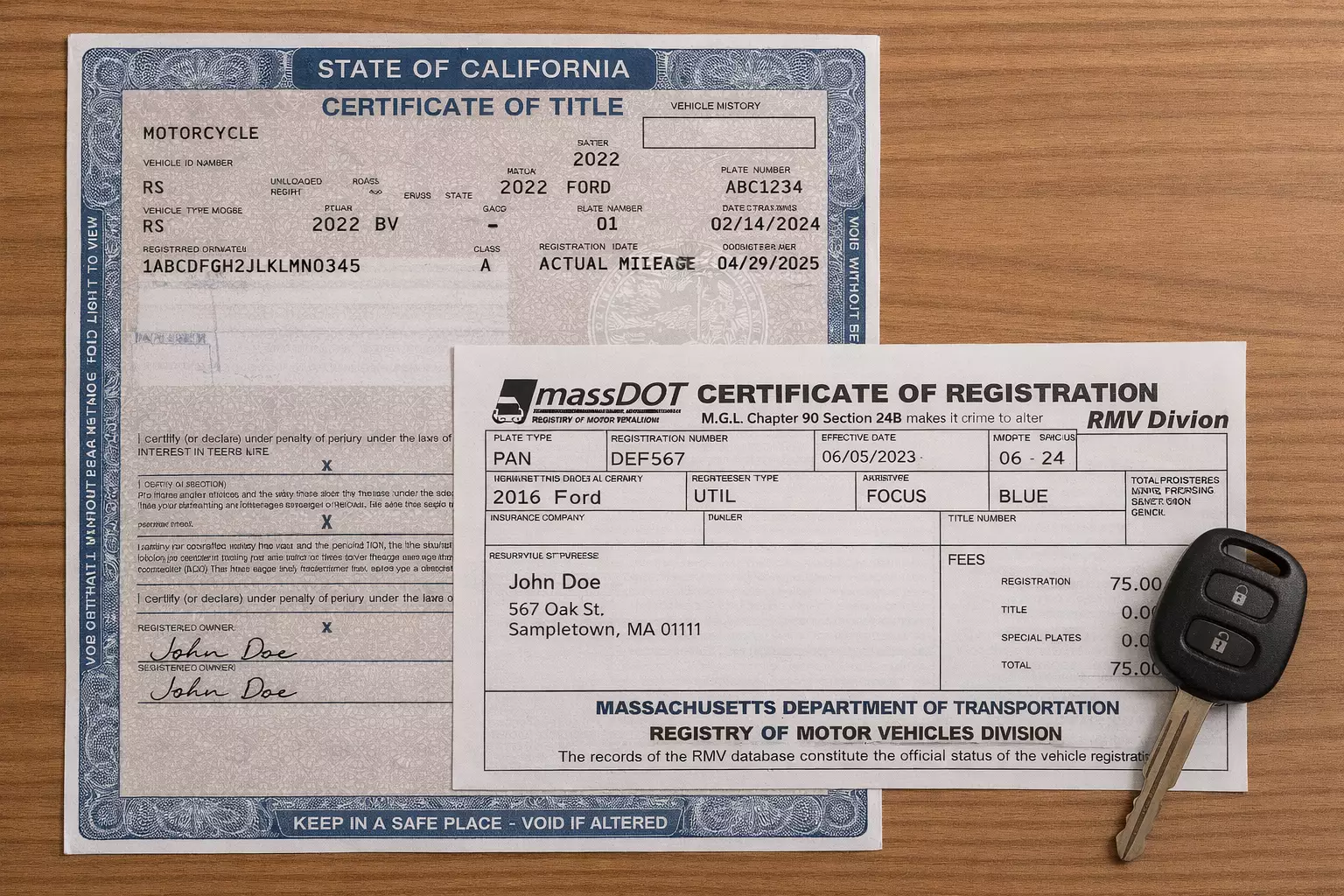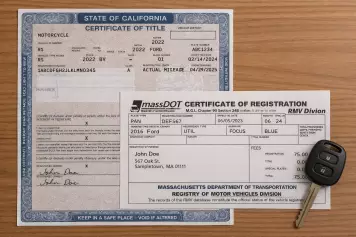Cars and trucks are all about speed, acceleration, and the inner workings of an internal combustion engine. Press the accelerator pedal, and the vehicle responds with increased power and engine spin. Manufacturers install a variety of gauges in a vehicle’s dashboard, telling the driver how fast they are traveling or if it’s time to stop for fuel.
If you wish to have the most updated information, factory options, vehicle accident reports, etc., use GoodCar's vehicle history reports.To understand why your vehicle’s engine spikes while out motoring or stopped at a red light, it is essential to know some basic functionalities.
RPM or Revolutions Per Minute
RPM is the moniker for revolutions per minute, of how many complete rotations an engine’s crankshaft makes every 60 seconds. This information is fed to the tachometer and displays it in thousands. The tach is a vital gauge, and it is wise to understand what the indicator tells you.
Tachometers
A tachometer is usually an analog or digital readout on the vehicle’s instrument cluster, either to the left or right side of the speedometer. This handy little device measures the rotational speed of the crankshaft inside the engine block. Tachometers are used in virtually every type of internal combustion engine, from lawnmowers and airplanes to monster diesel and earth-moving equipment. A tach can be a simple 4-digit gadget to complex optical devices spread out through several gauges.
Tachometers interpret signals from a magnetic pick-up or magnetic field sensor attached to the crankshaft casing (a lot of dry but vital information necessary for understanding). The crankshaft position sensor reads each protrusion of a “toothed wheel” or trigger wheel attached to the crankshaft. As the crankshaft rotates and drives the pistons, any variation in rotational speed is relayed back to the tachometer, and bada boom! You know how your vehicle is operating at any given moment.
Combustion forces drive the up-and-down motion of pistons in the combustion chamber. A crankshaft converts the up and down energy the pistons create into a rotational force, ultimately driving the wheels via a gearbox.
Crankshafts

A crankshaft starts the framework for an internal combustion engine. Crankshafts are the mechanical components embedded deep within the engine, converting reciprocating motion into a rotational force. Depending on the size and complexity of the engine, crankshafts come under immense static pressure. Forces come from piston combustion, drive torque, and bearing load, all of which affect the rotation of the crankshaft. A crankshaft is made of high-strength ductile iron, titanium, and forged steel to maintain rigidity and rotational speed.
RPM Fluctuations While Driving
Highway cars and trucks generally operate at their most efficient levels of 1500 to 3000 RPMs, with an internal combustion engine idling between 600 and 1000 RPMs. Diesel engines usually operate at slightly higher rates. Always consult the owner’s manual to see the optimal RPMs for your vehicle. Some cars and trucks are designed for cruising at 4000 RPMs at 70 mph. While this is standard on some vehicles, it is high for others and may be considered dangerous.
If you notice the tachometer spiking while out motoring, various issues may cause the RPM irregularities. The problem lies somewhere in the combustion process, sensor communication, spark plugs, ECU, or even stale gas.
- Dirty fuel injectors can be a significant cause of surging or hesitating RPMs. Dirt or carbon buildup in the injectors means fuel is not spraying out in the correct pattern or spraying erratically, and the engine cannot make power. Fuel may also be dripping into the cylinder chamber.
- Faulty spark plugs can be a big sign of problems, including misfires, acceleration spikes, and rough idling. Worn plugs, wires, and ignition coils will trigger a check engine light. Ignoring the problem can be costly down the road.
- Bad control valves and vacuum leaks cause power loss, engine stalling, and fluctuating RPMs. Vacuum leaks interrupt the airflow in the exhaust system’s intake manifold. The wear and tear of a bad air control valve disrupts information to the ECU (electronic control unit), again resulting in higher RPM fluctuations.
RPM Fluctuating At Idle
If you have spent significant time sitting in traffic on a hot summer’s day, your vehicle’s engine may suddenly run rough, and the RPMs may spike. Fuel-injected engines have a device called an idle air-control actuator that moderates the engine’s idle speed, and the IAC may be fouled or clogged, resulting in the idle speed or RPMs suddenly rising.

A faulty MAS or mass air flow sensor may also cause high revving and rough idling. These sensors measure the amount of air going into the engine and will send a signal to the main computer, ECU, to adjust fuel intake accordingly. The MAS helps to eliminate surging and maintains a proper air-fuel mixture.
Sensors are a big part of every modern internal combustion engine. Depending on the size and complexity of the vehicle, there may be hundreds of sensors, and the engine accounts for most of these devices. Everything is tracked, from blind spot detection and transmission range sensors to torque converter temperatures and brake performance.
Tips To Eliminate High Revving and Rough Idling Engines
Car and truck owners have heard the phrase more than once: Perform Routine Maintenance, starting with the manufacturer’s recommendations. Always ensure to routinely inspect and change spark plugs, along with performing fluid changes, and hose and filter replacements for optimal vehicle maintenance. Never make significant changes to your vehicle unless you know what you are doing!
- An effective change in routine can make a big difference. Run at least one or two tank fills of premium-grade gasoline through your vehicle. Higher octane levels help to burn off carbon buildup on the injectors. There are additives that may be added to your gas tank, which increase octane levels.
- Check vacuum hoses or the intake manifold for any leaks if you have mechanic tendencies. Vacuum leaks are most likely the cause of rough idling and engine spiking.
- Carbureted vehicles should use a good throttle body cleaner. Ensure the product you choose is top quality and the company is reputable. Other cleaners do more harm than good.
- Never ignore a check engine light. When the annoying little light appears on the dashboard, there could be an issue with the powertrain, transmission fluid, or engine. A majority of the time, the problem comes from the engine compartment. A serious issue has been detected if the check engine light is flashing or starts to flash. Get the vehicle to a trained mechanic immediately, if not sooner, because other systems begin to compensate for the problem, so the vehicle may drive as expected for the first day or two.
Understanding RPM Fluctuations Can Make Driving Easier
No matter the size, modern-day internal combustion engines are complex. Routine car repair and maintenance is the key to keeping any engine running efficiently through all types of weather and road conditions. Always take the vehicle to a trained mechanic, ensuring minor problems do not become big disasters.








![Best Sites to Check a Car’s History [2025 Review]](https://media.infopay.net/thumbnails/K8lMeG2QLjE46LPqZlmoi6SunKKdT5qvlaRZk6e1.webp)










![Best Sites to Check a Car’s History [2025 Review]](https://media.infopay.net/thumbnails/K8lMeG2QLjE46LPqZlmoi6SunKKdT5qvlaRZk6e1-w356.webp)
